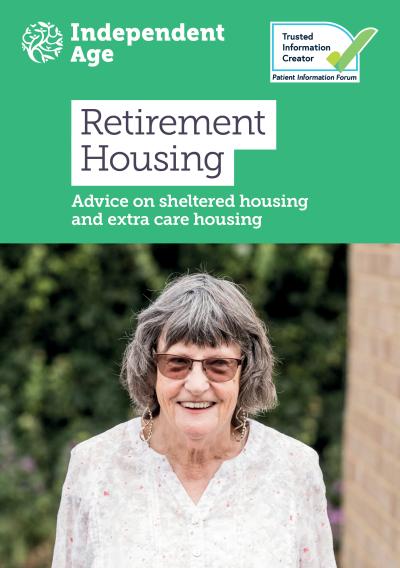Related publications

Choosing where you want to live in later life is an important decision. There are many reasons why you may want, or need, to move home.
You might be thinking about moving because your circumstances have changed. You may want to move because:
If you are thinking about moving, there are many options for you to consider. These include:
Think carefully – not just about what you need now, but also what you might need in the future. These are some important things to consider:
It’s a good idea to get advice, but the final decision should be yours.
If you can, try to see a property in person to get a feel for the home and the area before you decide to live there. If you're applying for a council or housing association property and need help viewing homes to check whether they're accessible to you, ask your council, a local disability charity or an occupational therapist for help.
If you want to move from a council or housing association property, ask your housing provider about your options.
Under this scheme, you may be offered a cash payment to help you buy a property if you agree to give up your council or housing association home. You will usually be downsizing, because the aim of the scheme is to free up housing for larger households on the council waiting list. Find your local council – on Gov.uk if you live in England or Wales, or mygov.scot if you live in Scotland – and ask for details of schemes operating in your area.
Also known as 'mutual exchanges', these can help social housing tenants to exchange homes. This may mean moving to another area or a different type of home. You register to advertise your home and look at other properties.
To exchange homes, you must:
Depending on the nature of your tenancy, there may be other requirements.
Visit Shelter to see if you qualify (in Scotland, visit Shelter Scotland and in Wales, visit Shelter Cymru).
You can also register your details on exchange websites, such as HomeSwapper. The Shelter websites have details of other tenancy exchange websites. Keep in mind that some websites might charge a fee.
If you want to move into sheltered housing, ask your landlord for more information about local schemes and if they can make a referral or nominate you.
Moving abroad in later life can seem tempting but you need to consider every aspect before you do, such as:
It might be difficult to return to the UK if you need or want to later, particularly if you need help finding accommodation and care, or to access benefits. See Gov.uk for more information.
Moving home is a big upheaval and might seem daunting – but you can get help.
If you are going to use a removal company, you should get two or three quotes before making a decision. Check that they offer insurance if your home insurance doesn’t cover you during a move. You should also make sure the company belongs to a professional body like the National Guild of Removers and Storers – their members belong to the Removals Industry Ombudsman Scheme – or the Scottish Guild of Removers, if you live in Scotland.
As well as helping you move, removal companies may offer other services, such as packing, storing unused furniture, disposing of unwanted goods and cleaning your home. Our moving home checklist has more information.
If you need to get rid of some things, remember:
If you are on a low income and receive Pension Credit, you may be able to get a loan from your local council to help with removal costs.
If you live in England or Wales and you receive Housing Benefit, you could apply for a Discretionary Housing Payment (DHP) to help with moving costs. You don't have to pay back a DHP. See our factsheet Housing Benefit for more information on DHPs.
If you live in Scotland, you may qualify for a DHP if you rent your home and you get Housing Benefit or Universal Credit. Visit mygov.scot for more information.

By calling Independent Age's free and impartial Helpline, you can get information and advice from one of our friendly advisers, or order our free guides.